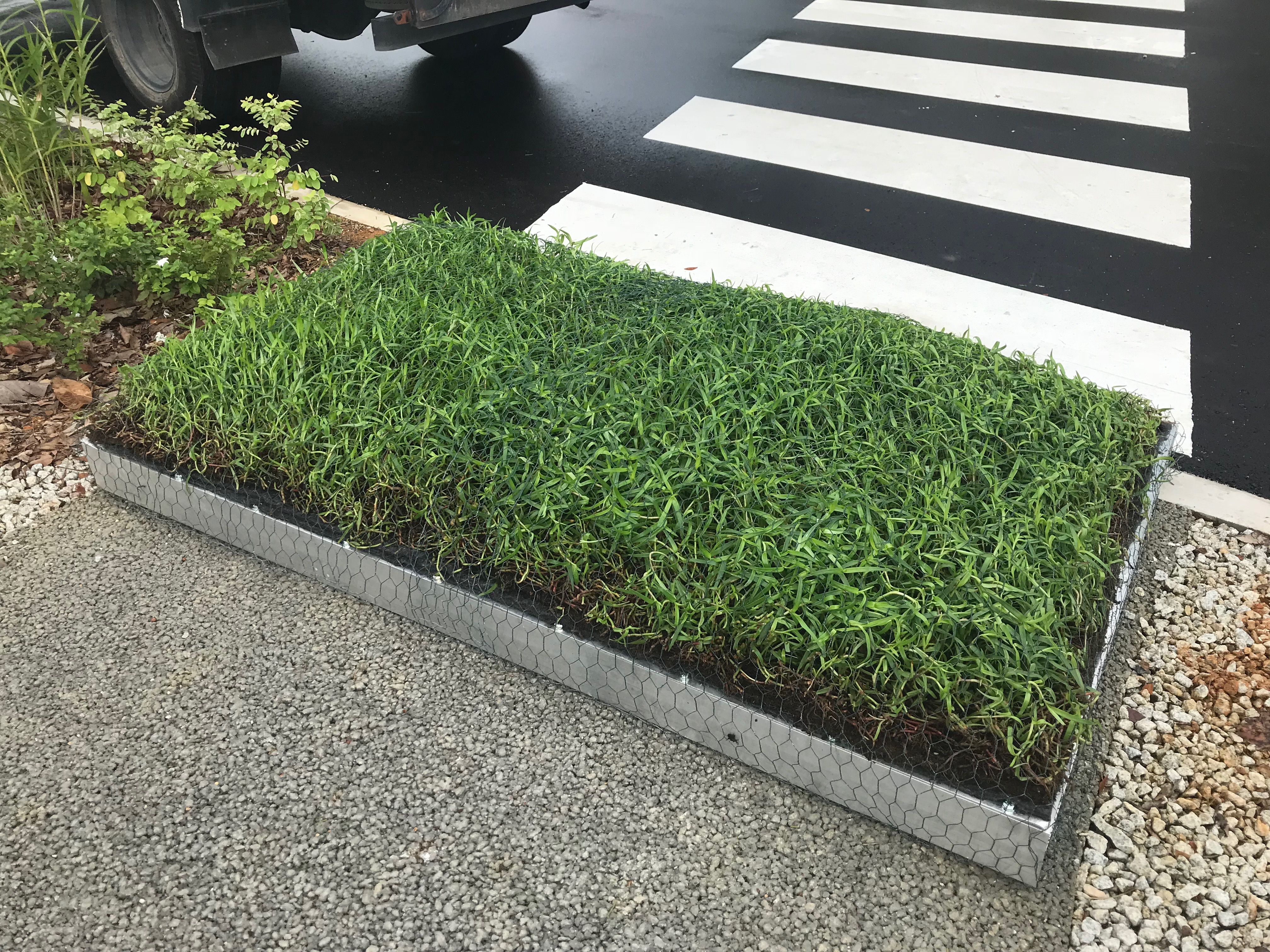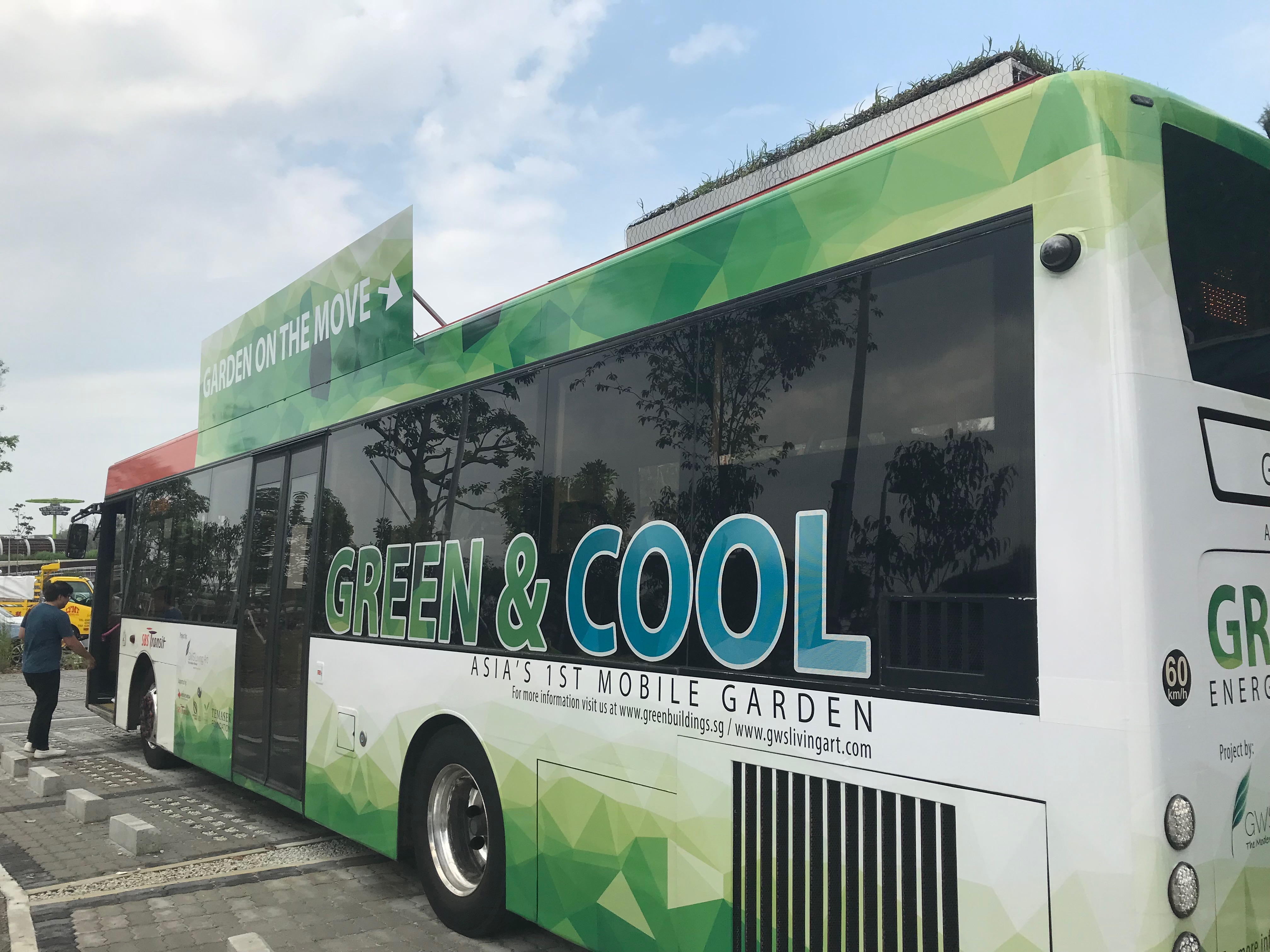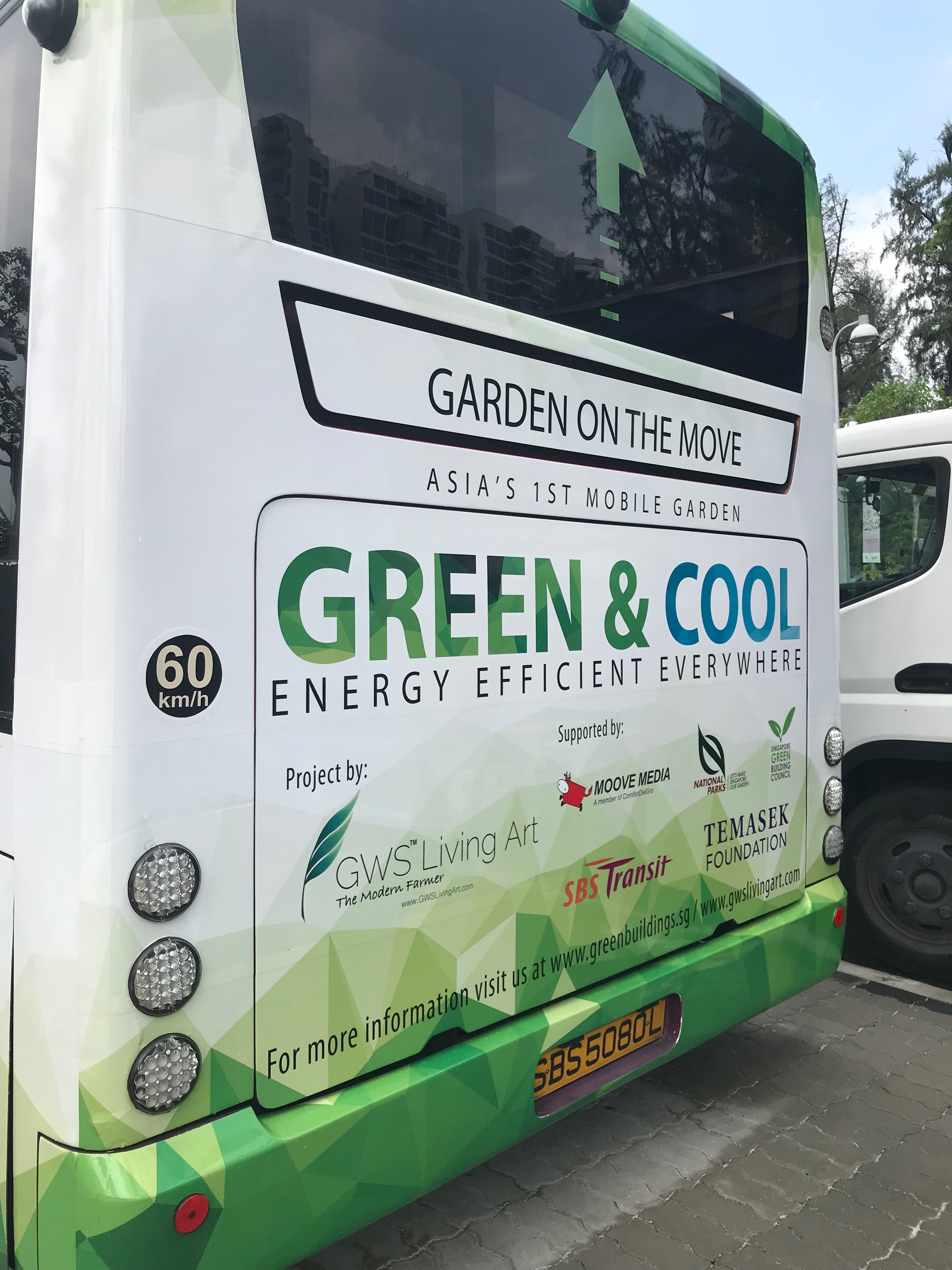You may have seen the news of an unusual SBS Transit bus with two staircases and three doors.
If so, here’s another unconventional bus that may pique your interest, making its rounds in Singapore.
Singapore’s very first fleet of buses with green roofs—reportedly the first in Asia too—was launched at the newly opened Jurong Lake Gardens on May 5, 2019, alongside the inaugural Singapore Garden Festival Horticulture Show.
Soil-less, lightweight green roof
Each public bus is outfitted with two patches of greenery on its roof.
The green roofs, designed by urban greenery firm GWS Living Art, are called Gaiamats, and each panel measures 1.8m by 1.05m.
 Photo courtesy of GWS Living Arts
Photo courtesy of GWS Living Arts
According to Zac Toh, founder of GWS Living Art, normal green roofs with soil weigh around 125 to 200 kg per mat. With the new lightweight Gaiamat, the weight per mat was reduced by two to three times.
The thinner mats make it easier to install and maintain.
"You can now put it on a bus, or car, anything really,"
The Gaiamats resemble a carpet of greenery, and are soil-less. Instead, the plants grow on a layer consisting of organic natural fibres weaved together, which acts as a substitute for soil. Below that is a layer comprising a water retention fleece, which helps to absorb water and rain.
Here's what it looks like before installation on the bus.
 Photo by Ashley Tan
Photo by Ashley Tan
The two species of plants on the Gaiamat were specifically chosen for their drought-tolerance, hardiness and wind-resistance.
Because of this, the mats do not require much upkeep or watering, only requiring maintenance two to three times a year.
Economical and energy-saving
The 10 green-roofed buses are part of a three month research study aiming to confirm that green roofs can help to lower the temperatures of bus interiors.
 Photo by Ashley Tan
Photo by Ashley Tan
 Photo by Ashley Tan
Photo by Ashley Tan
As the greenery shields the surface of the bus from direct sunlight, lower exterior temperatures are likely to translate to lower interior temperatures, leading to more efficient use of air-conditioning, and a corresponding drop in fuel consumption.
To measure the difference in temperature, thermal sensors will be placed beneath the plants, and on the underside of the roof.
As part of the study, checks will still be carried out on the mats and thermal sensors once a week.
Dr Tan Chun Liang from the National University of Singapore, an advisor for the study, stated that the temperatures of building exteriors with green roofs could be reduced by up to 20 to 30 degrees.
"An exposed concrete roof for a building could reach about 60 degrees on a hot afternoon," said Tan. "We want to see if this temperature reduction in buildings holds true for vehicles as well."
Tan added that green roofs could increase our thermal comfort outdoors as well:
"It's the same as having parks—you get cooler temperatures outdoors. Collectively, if we have enough vehicles with green roofs, we could reduce temperatures and increase our thermal comfort."
Making green roofs mobile
Greenery is more conventionally known to be found on roofs or sides of buildings.
To combat urban heat island effect—a phenomenon where cities experience higher temperatures compared to less urbanised areas, due to human activity and heat trapped by roads and concrete buildings—an increasing number of buildings in Singapore are sporting green roofs.
Not only do the plants help to cool building temperatures, but they beautify building facades as well.
The green-roofed buses are part of a 'Garden on the Move' initiative, funded by Temasek Foundation and supported by the National Parks Board, Moove Media, and the Singapore Green Building Council.
The 10 buses will be plying the roads as of May 5, today, and include services 139, 13, 58 and 81. They will be making their rounds in areas such as Toa Payoh, Ang Mo Kio, Bishan and Tampines.
"With our cityscape, we really wanted to be green and sustainable. And it's all about saving resources too," said Toh.
Top photo by Ashley Tan and GWS Living Arts
If you like what you read, follow us on Facebook, Instagram, Twitter and Telegram to get the latest updates.
